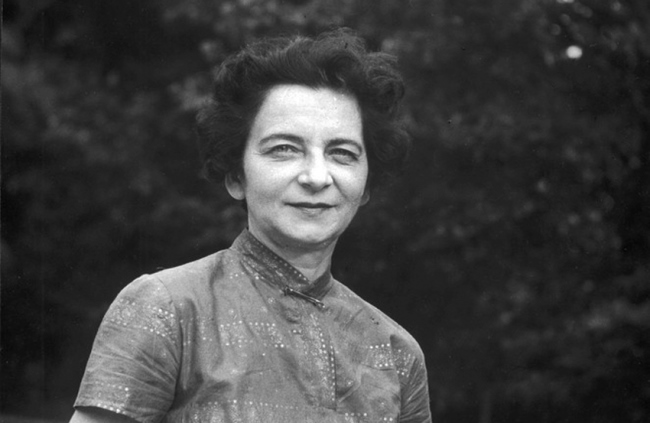Grażyna Bacewicz, Violin Concerto No. 7
by Peter Laki
Born February 5, 1909 in Łódź, Poland
Died January 17, 1969 in Warsaw, Poland
Composed in 1965
Premiered on January 13, 1966 at the Grande Salle de Palais de Beaux-Arts, Brussels, with Augustín León Ara and the Belgian Radio and Television Symphony Orchestra, conducted by Daniel Sternfeld
Performance Time: Approximately 20 minutes
Bacewicz was trained as a virtuoso violinist, which explains the large number of works for violin, and strings in general, in her catalog. In particular, there are not many composers in the twentieth century who wrote as many as seven violin concertos; and Bacewicz herself played the premieres of the first four. (A serious car accident in 1954 put an end to her active performing career.)
In the 1960s, the so-called “Polish school” was one of the most exciting phenomena on the international new-music scene. The contemporary music festival Warsaw Autumn, founded in 1956, quickly established itself as one of the foremost events of its kind in the world, unique in bringing the latest in Western avant-garde music behind the Iron Curtain. New Polish music, works like Krzysztof Penderecki’s Threnody for the Victims of Hiroshima (1960) and Witold Lutosławski’s Venetian Games (1961), conquered the world, using the most innovative musical techniques without ever renouncing expressivity.
Bacewicz, who had come from an essentially neo-classical compositional background, explored avant-garde tendencies together with her younger contemporaries, and in her last violin concerto, she filled out the traditional three-movement concerto form with an utterly new sound world emphasizing violinistic effects such as slow glissandos passing through many approximately notated intermediate pitches, and often placing the bow sul tasto (on the fingerboard) or sul ponticello (near the bridge). In the orchestra, the harps, the celeste, and the percussion play particularly important roles, and even the string section is sometimes treated “like percussion,” as the composer instructed. Yet the solo part is not without its lyrical, melodic moments, especially in the central slow movement, an atmospheric “Largo,” where the soaring lines of the violin blend with the mysterious “night noises” of the orchestra. The outer movements likewise include a multiplicity of musical characters, as indicated by the unusual tempo instruction of the first movement (“Tempo mutabile”), or by the alternation, in the Allegro finale, of playful figurations and more relaxed, introspective episodes.
Peter Laki is Visiting Associate Professor of Music at Bard Conservatory of Music.

